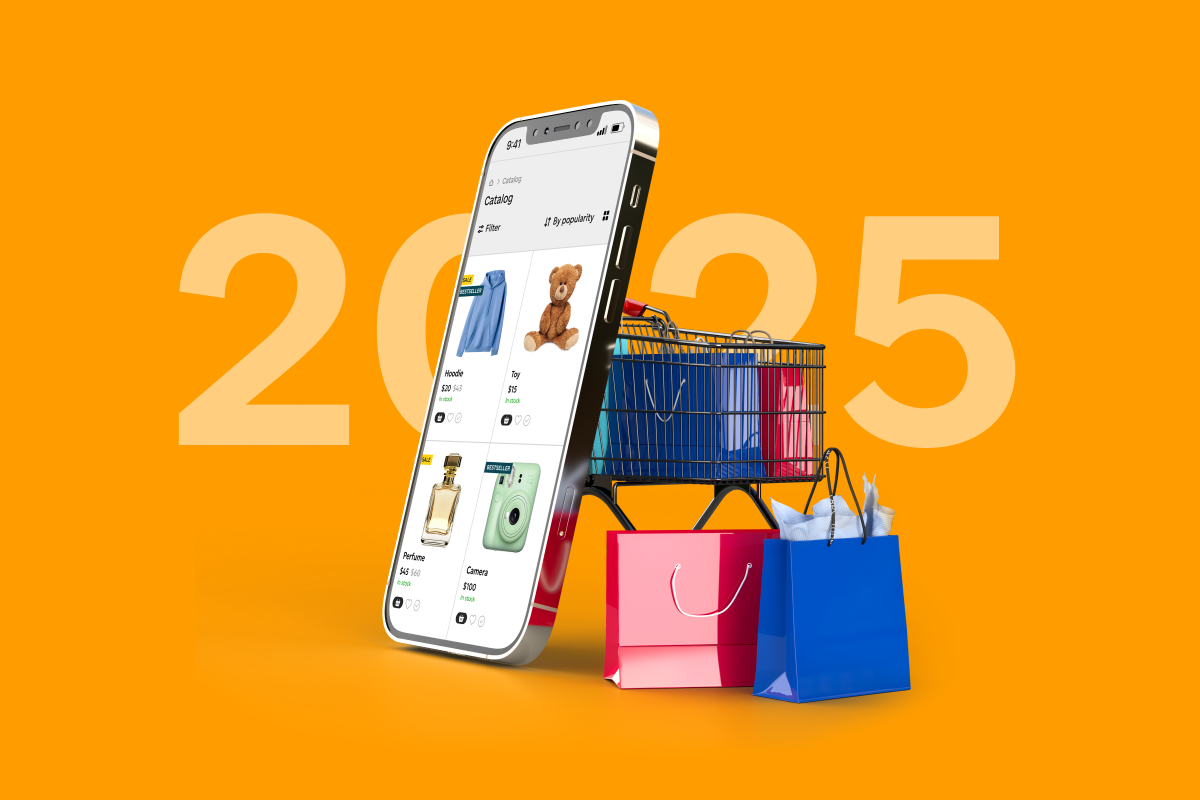We selected four of the best tools for promoting an online store and talked about their advantages and disadvantages.
After launching an online store, a business owner must almost continuously engage in promotion. Without promotion, the website will remain merely a beautiful product catalog that no one knows about. In this article, we will discuss the five most effective tools for promoting an online store.
The Most Popular Tools for Promoting an Online Store
Promoting an online store involves a set of tools and actions aimed at increasing the store's visibility and attracting users who will place orders. The best promotion tools include:
-
SEO;
-
Search advertising;
-
Social media;
-
Email marketing.
SEO
SEO (Search Engine Optimization) is a set of technologies and methods aimed at improving a website’s position in search engine results. Traffic generated through search engine optimization is referred to as organic traffic. The goal of SEO is to ensure that your site ranks at the top of search results for various queries. For instance, if you own a tableware store, you would want your site to appear when users search for "buy forks" or "buy tea sets." This can be achieved through optimization.
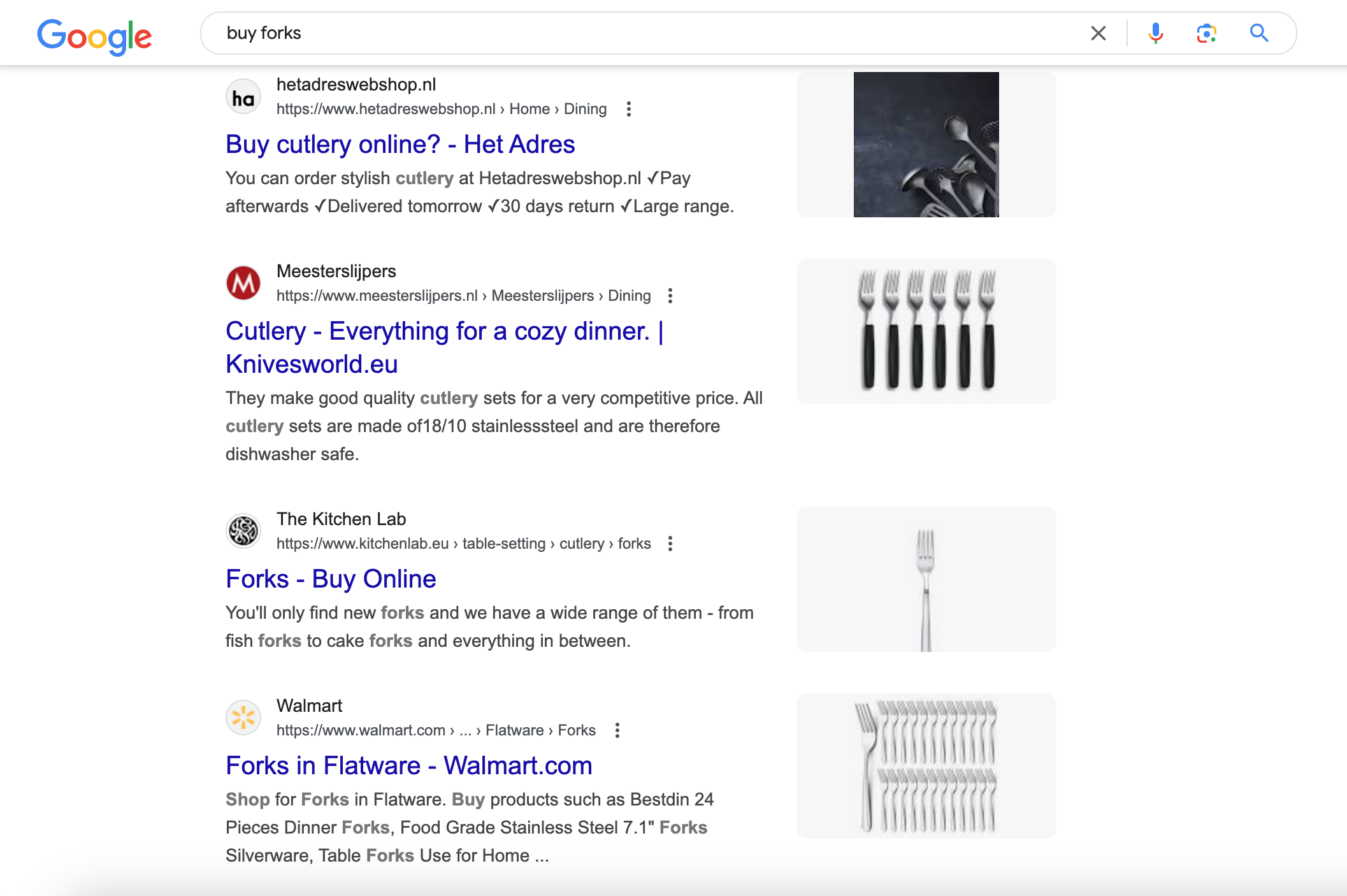
Most online stores invest in SEO, highlighting its importance as a promotion tool. When done correctly, optimization delivers excellent results over time. No other channel offers as much traffic — especially free traffic — as SEO. We have numerous case studies proving this, including instances where SEO efforts increased organic traffic 24-fold.
Advantages of SEO:
-
Free traffic—you don’t have to pay for clicks or views;
-
Allows competition with large players — you can promote your site for less obvious, low-frequency queries and still attract traffic even in a highly competitive environment;
-
Provides long-term results — you will continue to receive traffic even after completing major optimization work;
-
Can be done independently — there are plenty of basic SEO guides online, enabling optimization without hiring specialists.
Disadvantages of SEO:
-
If you’ve never optimized your site and want significant results, you’ll need to hire an SEO specialist for advanced optimization;
-
Results are not immediate—it can take over a month to see the first outcomes of optimization;
-
Requires constant content updates—search engine requirements change, and competitors also work on optimization, so you need to regularly update content to maintain your rankings.
Google Advertising
Google Advertising is a suite of tools that allow you to promote your products and services on Google for a fee. Search advertising includes contextual ads and dynamic remarketing.
Contextual Advertising
Google Ads contextual advertising is a tool for displaying ads among search results. Contextual ads are similar to regular search results but include a small "Ad" label. The main advantage of this type of advertising is that ads are displayed in the most visible parts of the page, ahead of organic results. The system determines which ads to show based on search queries and ad relevance. It also considers the advertiser’s bid — how much they’re willing to pay per click.
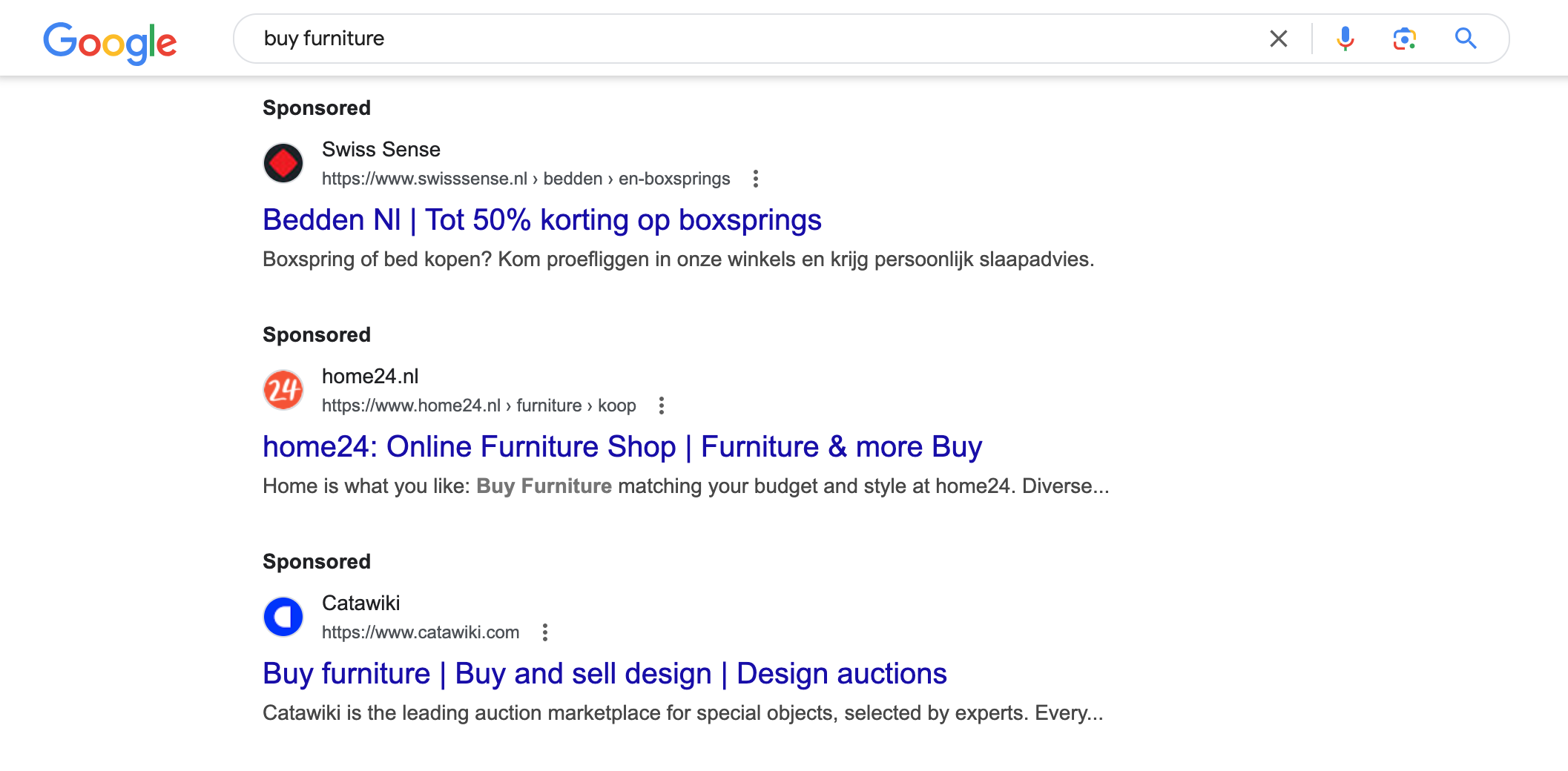
Advantages of Contextual Advertising:
-
Displays ads only to potentially interested users;
-
Can be set up independently;
-
Advertisers pay only for clicks on their ads.
Disadvantages of Contextual Advertising:
-
High competition;
-
Poorly configured ads can lead to wasted money;
-
Google may display several ads from different advertisers simultaneously.
Dynamic Remarketing
Dynamic remarketing is a tool that allows you to show ads to users who have already visited your site. Google tracks how users interacted with your online store, which products they viewed, and automatically creates ads based on this information. These ads are displayed on Google’s partner sites, which may be unrelated to your online store, such as news websites. The ad typically includes a small product photo and its price, and clicking on the banner directs users to the product page. Learn more about dynamic remarketing and its setup in our detailed article.
Advantages of Dynamic Remarketing:
-
Targets interested audiences with personalized ads;
-
Allows you to re-engage customers who didn’t complete a purchase;
-
Creative ads are generated automatically.
Disadvantages of Dynamic Remarketing:
-
Requires an audience for which the system can gather data;
-
Needs data collection setup in Google Analytics;
-
Banners can be blocked by ad-blocking services.
Google Shopping
Google Shopping is a tool for displaying product ads in Google search results and on partner websites. This advertising channel has gained popularity among Ukrainian sellers due to its relatively low cost and effectiveness. Unlike regular contextual advertising, Google Shopping displays the product’s price, name, and photo alongside the link. The product block appears at the top of the page.
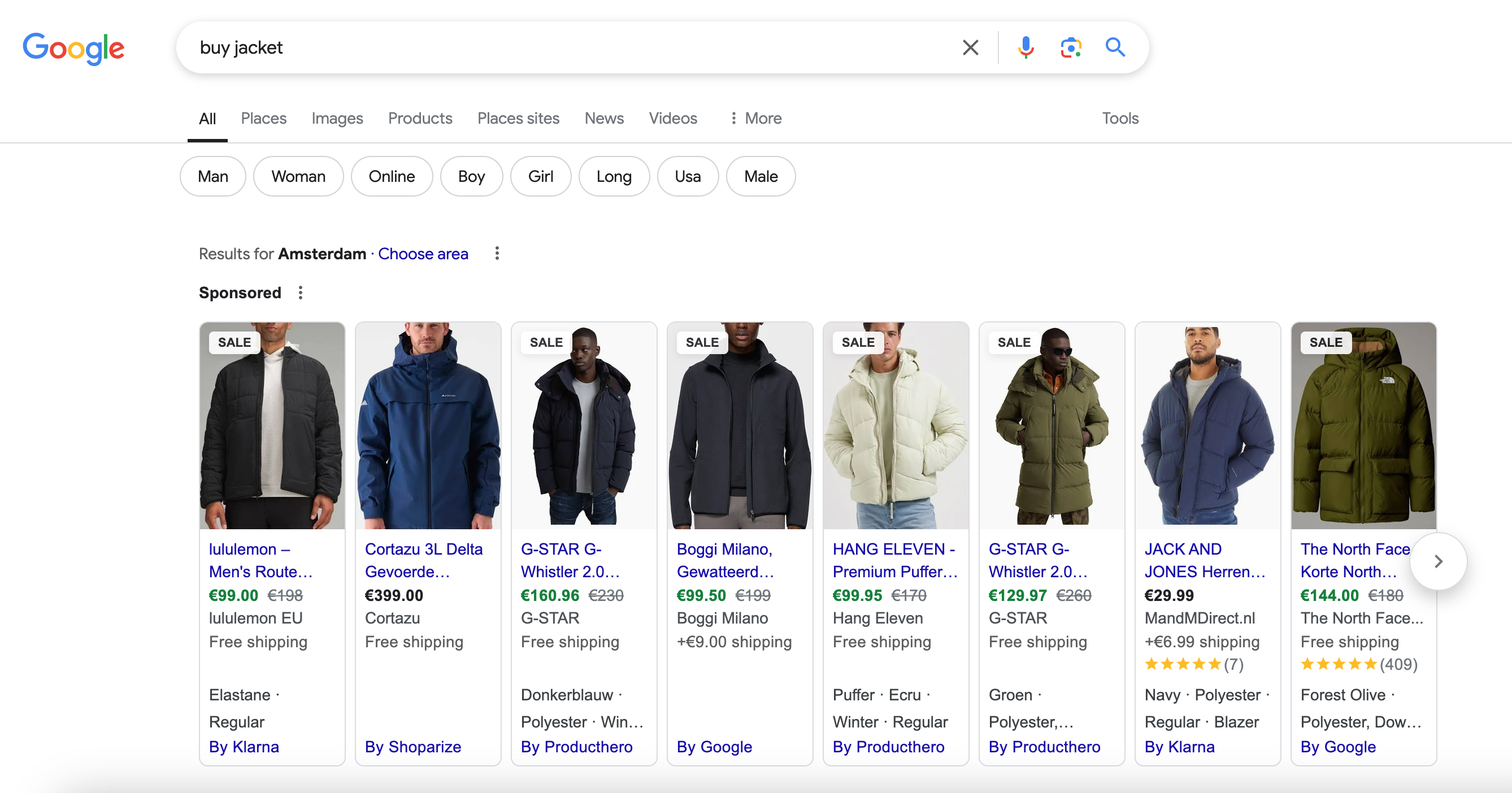
Advantages of Google Shopping:
-
Ads include key product information and direct users to the product page;
-
Ad-blocking services don’t hinder ad display;
-
Ads are shown for targeted queries;
-
Entrepreneurs report it as the most effective promotion tool.
Disadvantages of Google Shopping:
-
Difficult to set up;
-
Google frequently tightens requirements for advertisers, including website and content standards;
-
Risk of account suspension.
Email Marketing
Email marketing involves promoting your business through email campaigns. Mass mailings can inform your audience about promotions, special offers, new arrivals, and more. Personalized emails encourage individual clients to make purchases, such as sending reminders about items left in their cart.
Advantages of Email Marketing:
-
Can be self-taught;
-
Low cost—you only pay for the email service;
-
Allows segmentation of mailing lists to send relevant offers;
-
Easy to track results such as clicks, transitions, and purchases.
Disadvantages of Email Marketing:
-
Building a mailing list is slow, and buying lists is not recommended;
-
Requires someone to design the emails;
-
Primarily informs users rather than directly prompting purchases.
SMM
SMM (Social Media Marketing) promotes businesses on social networks. SMM attracts new customers, increases brand awareness, and boosts sales. Unlike other marketing tools, social media offers both free and paid promotion methods. You can create content that becomes popular and draws users to your store’s profile or launch targeted ads to direct users to your site. Social media marketing’s flexibility allows you to find the perfect promotion formula and grow your customer base.
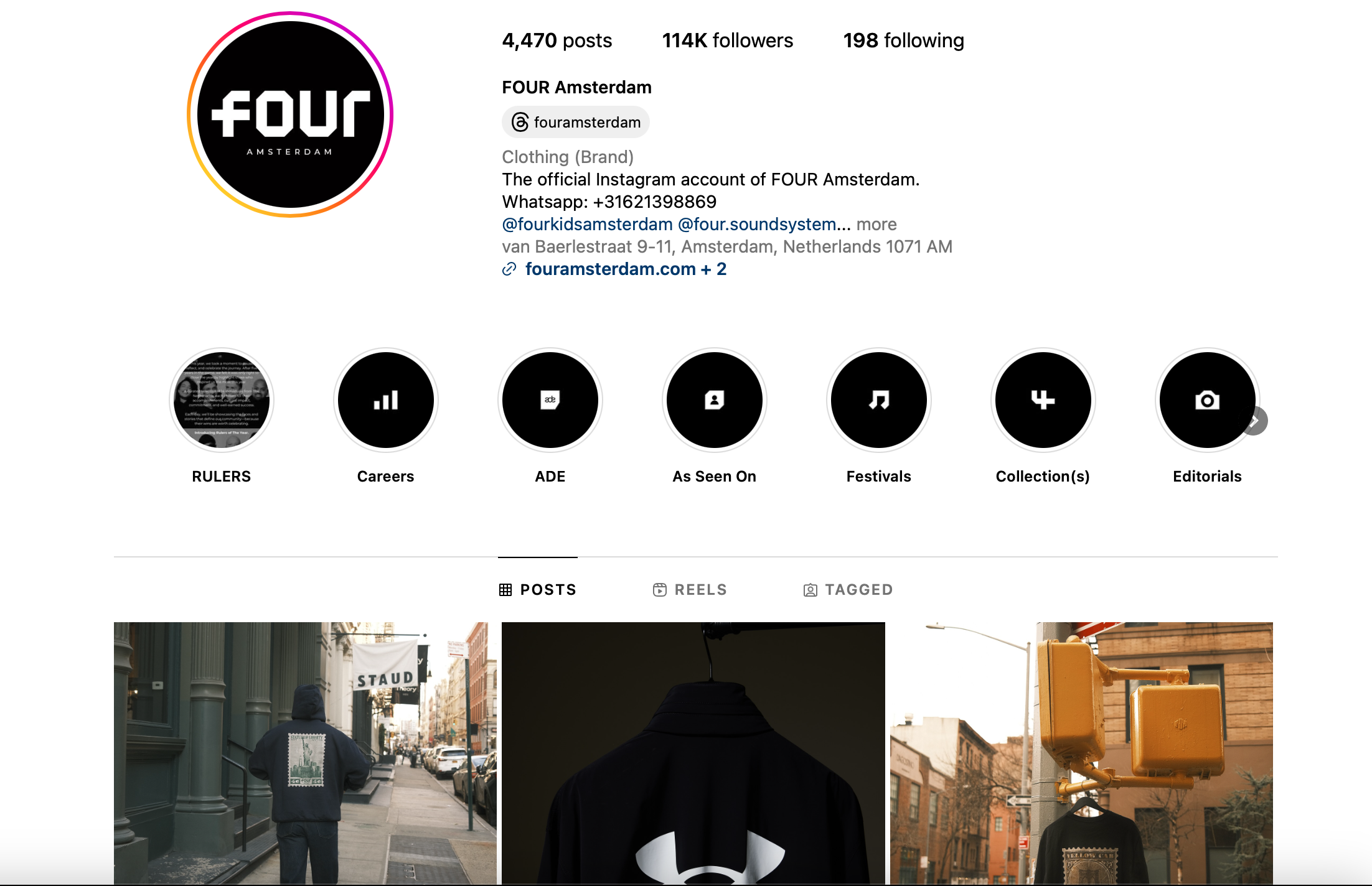
SMM not only expands your audience but also drives overall sales. For instance, the Cartum client, Atributmold store, started receiving its first sales through TikTok. They sought a budget-friendly promotion method and chose social media. By posting videos of their production process, they attracted users. Today, Atributmold is a successful international business with customers in various countries.
Advantages of SMM:
-
Access to a large audience;
-
Abundance of guides enables independent promotion efforts;
-
Wide range of tools and strategies;
-
Having active social media is essential for brand growth and visibility.
Disadvantages of SMM:
-
Free methods may take a long time to yield results;
-
High competition;
-
It can be challenging to drive traffic from social media to a website.
Conclusions
There are many channels for promoting an online store, each with its advantages and disadvantages. When choosing channels, consider your niche and advertising budget. After launch, analyze performance metrics to invest only in effective channels and achieve higher sales.



